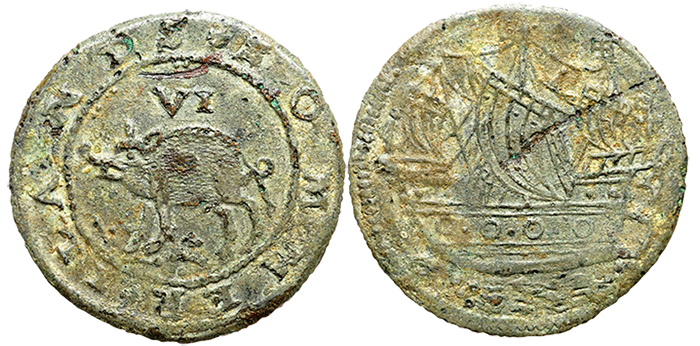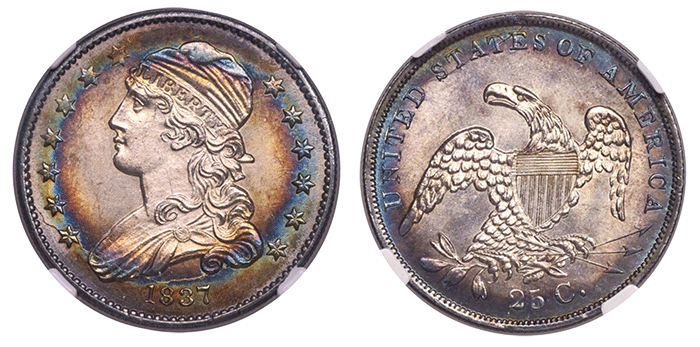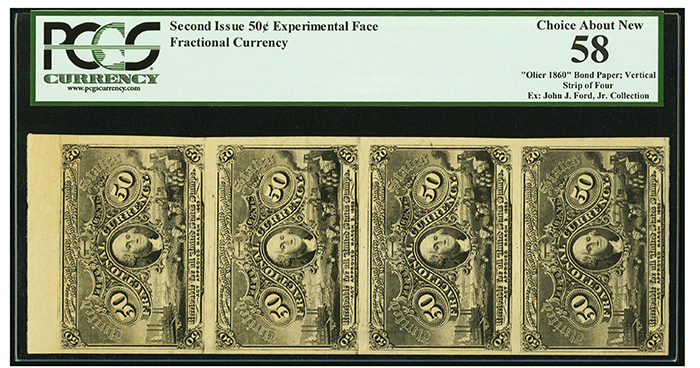By Chris Bulfinch for CoinWeek …..
One of the largest coin, currency, medal, and collectibles auctions in the world is set to take place at the FUN show in January.
The Heritage Auction will take place at the Florida United Numismatists (FUN) show in Orlando between January 8 and 12, and it promises to be a fascinating exhibition of rare and remarkable material from almost every conceivable sector of numismatics, notaphily, exonumia, and other currency-related collecting fields. While some items are sure to be sold for astronomical sums to well-capitalized dealers and collectors, among the thousands of other pieces filling less vaunted auctions are pieces worth bringing to numismatists’ attention.
As fascinating as the marquee items are, there are worthy items in smaller lots that will be available for purchase. Online bids have already opened on a lot of material, and even the obscurer lots promise to have competition. Just taking a peek at a few lots can give a collector a sense as to the range of material available for bidding and unfamiliar pieces can teach collectors a great deal.

1. Lot 4068: 1616 Sommer Islands Sixpence, Large Portholes
A favorite anecdote of some world coin dealers involves “Hogge Money”, the first coinage of what is today Bermuda. The coins, struck beginning in 1616, bore an image of a pig and were brought to the island by Daniel Tuckar, the governor of the territory. According to PCGS CoinFacts, the coins were produced in England. Though somewhat crudely struck, the coins are an evocative and important part of the currency history of North America. The coins are all exceptionally rare, and the example in the Heritage FUN Auction is one of the finest known, certified AU-50 by NGC. According to Heritage’s site, one of the coin’s earliest owners was Jacob Giles Norris, a Philadelphia numismatist and philanthropist.
Bermuda would make several explicit references to this numismatic history beginning in 1970, when they placed an image of a pig on the reverse of their one-cent coin after they replaced the pound sterling. The pig remains on the coin to this day. In 1989 and 1990, several gold commemorative coins were struck and issued that honored the discovery and early settlement of Bermuda and the Hogge Money used by the early settlers.

2. Lot 4064: 1652 Pine Tree Shilling
Another classic colonial design, the mid-17th century Pine Tree shilling represents some of the earliest traditional currency produced in North America. Its storied past, coupled with its rarity, makes any examples a prize to interested collectors. This particular example, aside from being in a remarkably high grade, features deep rainbow toning and is certified MS-64 Light Red by PCGS. Most coins of this type feature matte grey silver toning, making such a colorful specimen remarkable. Its high bids reflect its desirability.
The example in the FUN auction was once part of the Alan V. Weinberg Collection. It is a rare variety, with a Noe 6 reverse and a 350 degree die alignment. According to Heritage’s site, it may be the finest known example of that variety.

3. Lot 4161: 1837 Capped Bust Quarter
Not unlike the iridescent Pine Tree shilling, a Capped Bust quarter stood out for its deep toning. Though not as rare or sought-after as Hogge Money or a Pine Tree shilling, problem-free, high grade, toned Capped Bust quarters are notable. Well-struck examples in third-party holders routinely sell for thousands of dollars, and the toning on this example makes it especially interesting to collectors of Capped Bust material, or those seeking bright toning. This coin is the only example that NGC has certified MS-66+*; a total of six 1837 Capped Bust quarters are certified MS-66 by NGC. It is the finest known 1837 Capped Bust quarter.
Two large die cracks also distinguish this piece. On the obverse, from a star around 7 o’clock cuts down towards the date, while the reverse, around 11-12 o’clock, a crack runs along the bottom of the letters “STA” in the word “STATES”, and dissects the “T” and the top of the “E”, ending at the edge of the rim.
The colorful quarter came from the Col. E.H.R. Green Collection.
This finest-known 1837 quarter is not the only colorful quarter dollar from the E.H.R. Green Collection on offer at the 2020 Heritage FUN auction. An 1807 Draped Bust quarter with even more intense colors is available as well. The third-finest known 1807 quarter dollar promises to bring in an amount comparable to the 1837 piece.
4. Lot 20112: Olier Watermarked Fractional Currency Second Issue
Perennially popular among U.S. paper money collectors for their unusual denominations (unusual to current sensibilities, at least) and fascinating history, fractional currency collectors who don’t have four, five, and six figures to spend may not have encountered many uncut sheets of the small notes. A number of uncut fractional sheets are on offer in the Heritage Auction, but this example, a sheet of four 50-cent notes from the Second Issue period (1863-1867) featuring the experimental Olier Watermark.
The newly-founded Bureau of Engraving and Printing was experimenting with new paper types shortly after the introduction of fractional currency in 1862. A major focus of their efforts involved enhancing security features to mitigate counterfeiting. A star appears on the back of the sheet, and the paper is a distinctive color. The paper and watermark combination date from 1860. The Olier Watermark paper is rare, and an uncut sheet for four notes is quite an interesting item. The sheet being auctioned was once part of the John J. Ford Jr. Collection.
Whether an amazingly toned quarter or a test strip of fractional currency notes, the material in Heritage’s auction at FUN is remarkable and can be a useful resource for collectors of all levels of capital and experience. Perusing the catalog can expose numismatists to things they may not have known about and provides some useful and interesting historical information. Once the auction is concluded, the results can form a baseline for coin prices.
Collectors interested in learning about high-end material and the process of major auctions should look into the Heritage FUN auction. Its catalogs make for great numismatic reading and may inform collectors seeking remarkable material.





